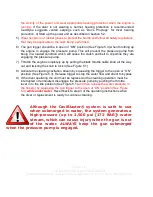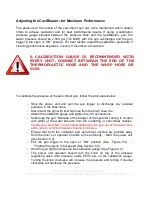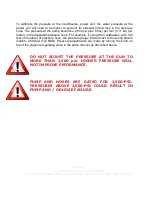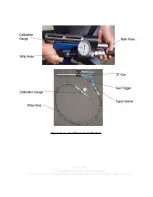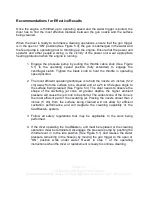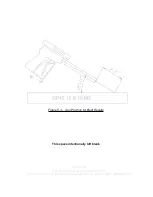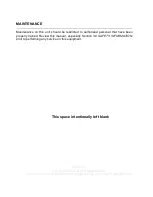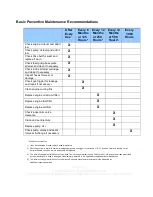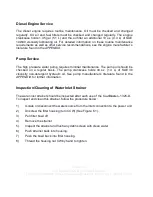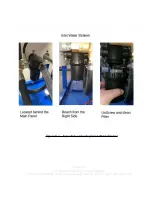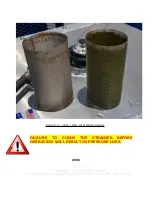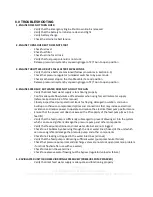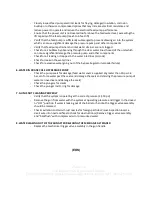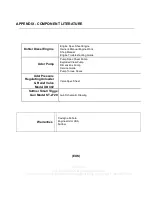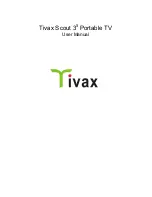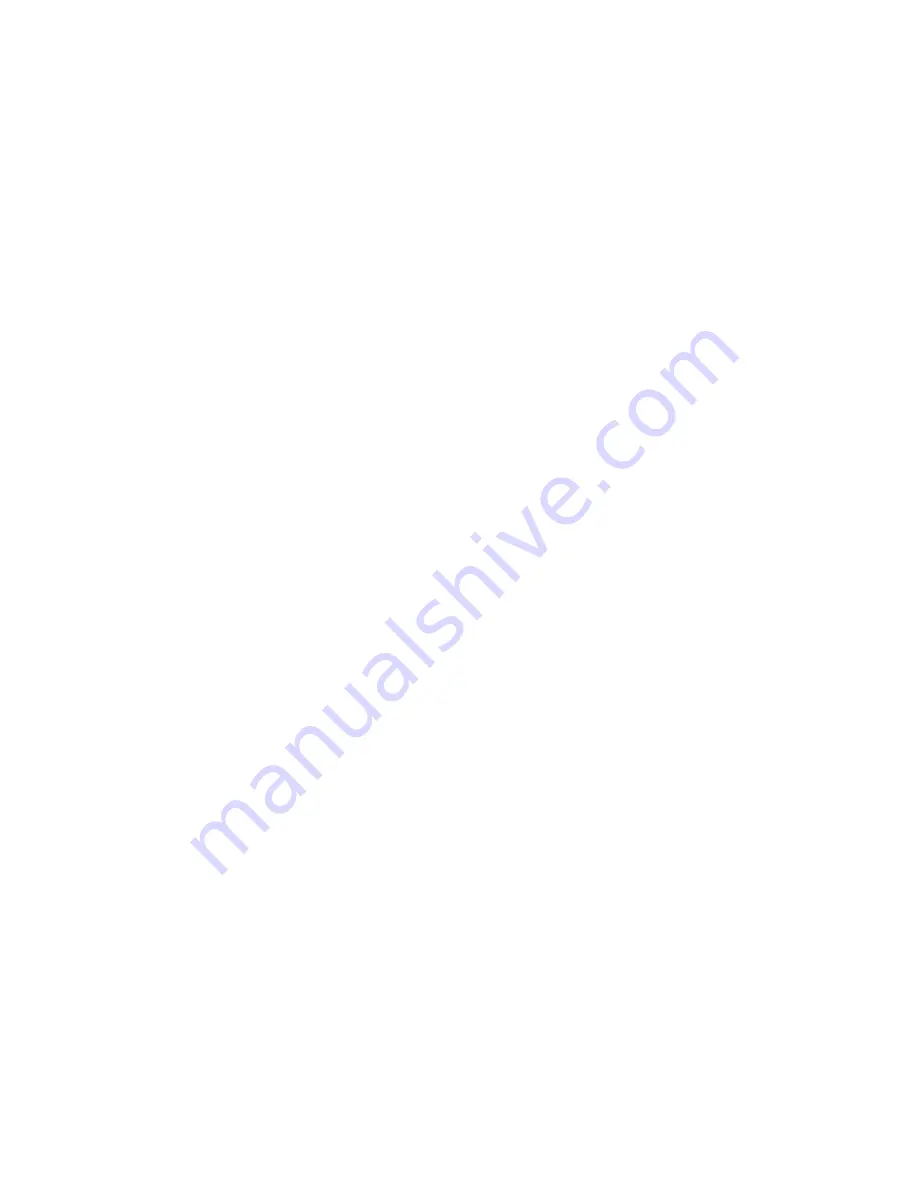
8.0 TROUBLESHOOTING
1. ENGINE DOES NOT TURN OVER
-
Verify that the Emergency Engine Shut-Down knob is released
-
Verify that the batery terminals are clean and tight
-
Verify batery charge
-
Check the alternator belt tension
2. ENGINE TURNS OVER BUT DOES NOT START
-
Check fuel level
-
Check fuel flter
-
Check fuel line for air lock
-
Verify that fuel pump solenoid is not stuck
-
Release pressure in system by squeezing trigger of Z/T Gun to open position
3. ENGINE THROTTLES UP, BUT STALLS AFTER FEW SECONDS
-
Verify that drive belts are tensioned (follow procedures in Section 6.5)
-
Check that pressure regulator / unloader switches to by-pass mode
-
Check mechanical stop on the throtle cable if at end position
-
Release pressure in system by squeezing trigger of Z/T Gun to open position
4. ENGINE SPEEDS UP, BUT WATER DOES NOT GO OUT THE GUN
-
Verify that inlet feed water supply is functioning properly
-
Confrm adequate low/volume of feed water when using forced inlet water supply
(reference Section .3.2 of this manual)
-
Closely inspect feed pump electrical leads for fraying, damaged insulation, corrosion
buildup or otherwise compromised splices and connections that may increase electrical
resistance and reduce power to operate and reduce the electrical feed pump performance
-
Ensure that the power unit does not exceed the lif capacity of the feed pump (max 5 to 6
feet lif)
-
Verify that the feed pump is sufciently submerged to prevent drawing air into the system
which can cause signifcant damage the pressure pump and other components
-
Verify that feed pump strainer and inlet water strainer are not clogged
-
Check for air bubbles by observing through the clear water lines (hoses) of the unit which
can cause signifcant damage the pressure pump and other components
-
Check for air leaking or trapped in the water inlet lines (air-lock)
-
Verify that the feed pump is delivering sufcient water (pump mechanical failure)
-
Check that pressure pump inlet and discharge valves are not stuck open (common problem
if unit not lushed afer use with sea water)
-
Check for leaks in the water lines
-
Check for excessive water lowing out the bypass (regulator/unloader failure)
5. CAVIBLASTER UNIT OR HOSES VIBRATING EXCESSIVELY (PRESSURE PUMP STARVED)
-
Verify that inlet feed water supply is adequate and functioning properly
Page - 39
CaviBlaster 1325-D Operations Manual
For More information please email sales@cavidyne.com or call 1-(352)275-5319

